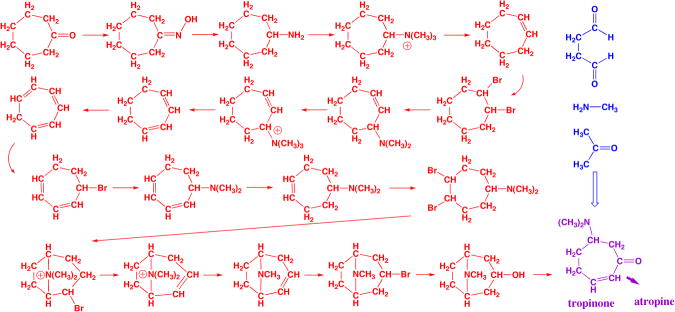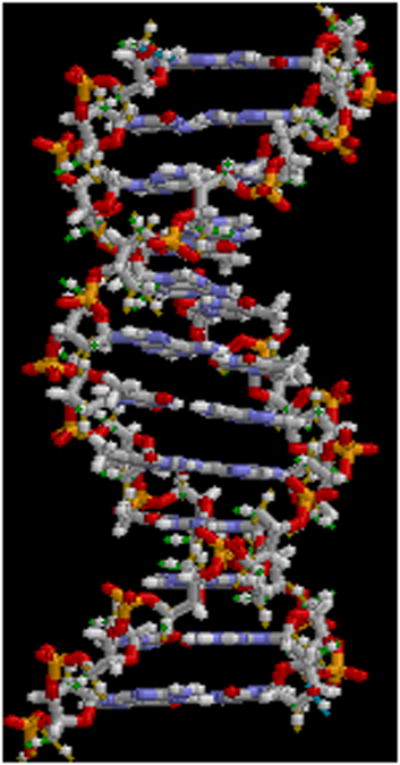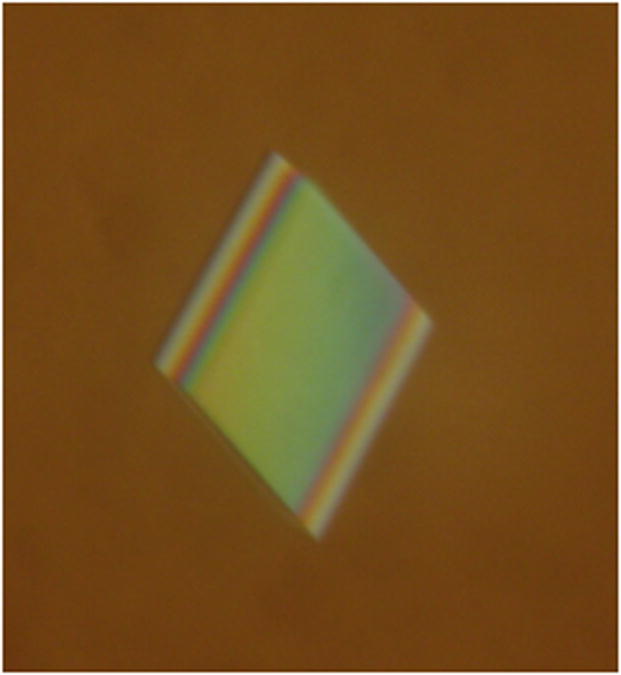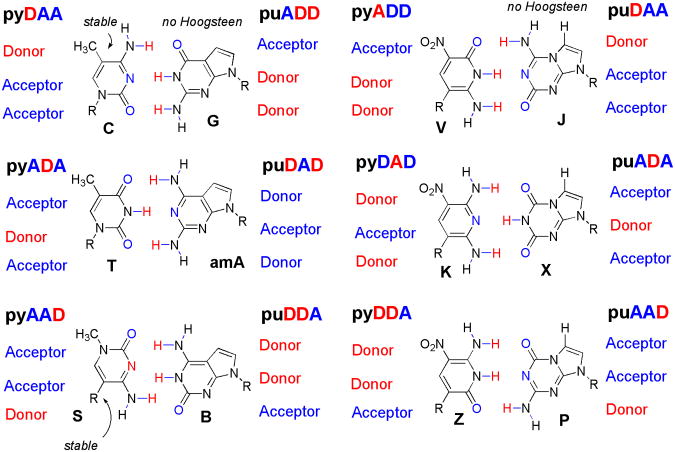Ancient philosophy was divided into five parts. Epistemology considered the nature of knowledge. Metaphysics sought to discern the fundamental structure of reality. Politics asked how humans could best function within societies. Ethics hoped to identify fundamental moral values. And aesthetics was entrusted with the task of determining what is beautiful.
Only politics has survived more or less intact from the ancients to the present. In contrast, epistemology has devolved into a funk, with philosophers largely concluding that true knowledge is impossible or, still worse, “constructed” [1][2][3][4]. The same for ethics, which now seems to be a collection of circular rationalizations to justify the teachings of one's parents. Aesthetics, in one direction, has become the nihilism of modern art (John Cage's 4′33″ comes to mind) [5]; in another, aesthetics has become “design”, whose ascendant unifying principle is a utilitarian “form-follows-function”, a utility that drives the aesthetic of contemporary engineering.
While some might view metaphysics as having survived as modern science, science as it is practiced today is qualitatively different from the metaphysics of Aristotle. True, the extraordinary diversity among the modern sciences makes it difficult to make a single statement about how “science” in general is practiced. After all, the daily activities of theoretical physicists and evolutionary ecologists resemble each other no more than those of symphony conductors and auto mechanics. However, the modern sciences have a unity: they are all intellectual activities that embody a field-appropriate method that, every now and then, leads the scientists to conclusions different from those they set out to find [6].
Experiments, especially controlled experiments in a laboratory, are excellent tools to achieve this goal. Unknown to ancient Greek metaphysics until its end, experimenters can encounter results that so profoundly contradict their worldview that that view must be changed.
This does not mean, however, that scientists are not influenced by their aesthetic instincts. Physicists frequently admit this influence, and sometimes even prescribe it. None other than Paul Dirac argued that beauty was more important to equations in physics than their correspondence to fact [7].
In contrast, modern biology generally do not allow aesthetics to influence their thinking; long gone (but still embarrassing) are the effusions of past biologists admiring the handiwork of a purposeful god.
And for good reason. Again and again, detailed inspections of living systems have taught biologists that Darwinian evolution generally has not delivered elegant solutions, aesthetic solutions, or even simple solutions, to challenges presented by the need to remain alive. Instead, in its underlying detail, biology reflects four billion years of random variation, historical accident, flawed adaptation, and partial optimization. Thus, biology (at least as know to biologists) is better described as a “hack”. In its details, life resemble less an aesthetic, and more something expected from generations of computer nerds re-writing code originally written for another purpose, at a different place, and with imperfect skill.
Nowhere is this better exemplified than in the structure of deoxyribonucleic acid, DNA. From the time that Watson and Crick originally proposed the double helix, scientists, teachers, and laypeople alike have effused about its elegance and beauty. Its picture graces the cover of textbooks. It twirls in the introduction to Nova episodes on PBS. And throughout much of the world of synthetic biology, DNA is regarded as utilitarian perfection, an example of perfect chemistry delivered by a perfect biology. Indeed, to the engineers so prominent in today's synthetic biology, DNA's presumed perfection inspires, instructs, and delivers to the engineer “biobricks” that can be standardized, archived, and re-assembled into large constructs, much like Lego® blocks.
But like so much else in biology, the aesthetic beauty of DNA comes only from artistic renderings of the molecule that make visible a particular that cannot, in fact, be seen at all. The colors in those renderings come from wavelengths of light that are 1000 fold larger than a DNA molecule itself. And as often as not, the molecule is abstracted by, well, things that look like Legos.
Looking closer at its molecular structure without the color, DNA loses its symmetry [8]. For example, the pair between adenine and thymine is joined by just two hydrogen bonds; the pair between guanine and cytosine is held together by three. This causes no end of problems for those wishing to use biobricks built from DNA. The A:T pair is much weaker than the G:C pair. This makes it difficult to design pieces of DNA that bind to other pieces of DNA with equal affinity all at the same time. Therefore, if one heats a complex assembly of DNA molecules to “melt” the DNA structure, and then cools the mixture back to a temperature where the structure is stable, the double helices generally do not reform. Self-assembly is limited only to mixtures of a few, largely pure, DNA fragments.
If DNA were the product of design, we would use aminoadenine instead of adenine to create a more utilitarian structure (Figure 2). Aminoadenine will form a Watson-Crick pair with thymidine joined by three hydrogen bonds.
Figure 2.
Design could create a DNA molecule that is far better, from criteria of symmetry and utility, than the “hack” DNA that we are forced to suffer with. Here is a more symmetric, more utilitarian, and more beautiful DNA alphabet that has 12 different letters (not the four presented by the “hack” DNA), all pairing with their complements with a symmetric three hydrogen bonds, and all optimized structurally to support biobricks in synthetic biology.
But of course, there is no reason to expect DNA to meet an aesthetic imposed by a human culture. After all, DNA is a “molecular hack” not produced by design. If we accept this, this non-aesthetic asymmetry of natural DNA becomes understandable..
By hypothesis, the adenine in our natural DNA is not more aesthetically “symmetric” because of constraints surrounding chemistry that preceded biology, chemistry that allowed life to originate. Adenine can be formed spontaneously from hydrogen cyanide, HCN, a molecule with just three atoms under prebiotic conditions. Aminoadenine cannot, or at least not in similar amounts.
Chemists, whose culture is providing most of the tools of modern synthetic biology, lie between physicists and biologists in their willingness to allow aesthetics to influence their professional work. In the 20th century, chemists developed an “art” (a delightfully ambiguous term) called “The Total Synthesis of Natural Products”. Total synthesis, as an activity, reassembles molecules from Nature from simple precursors following a sequence of deliberately selected chemical reactions.
The art of Total Synthesis has a utilitarian side. If you need a molecule, then Total Synthesis is one good way of getting it, especially if Nature makes it only sparingly.
However, by the 1950s, notable chemists like Robert Burns Woodward [9], E. J. Corey, Gilbert Storkbegan to consider their craft as an “art”, in the very sense that artists use. They began to refer to examples of total synthesis is being “elegant” and, on occasion, “beautiful”. Indeed, entire books have been written with titles such as “Art in Organic Synthesis” [10]. And their students came to populate chemistry departments across the American academic landscape,
In some cases, examples of Total Synthesis have been adored no less than a Da Vinci or a Rembrandt. For example, K. C. Nicolaou, a synthetic chemist who trained with Corey, wrote a review a decade ago that was fulsome [11]. With images of Woodward, Corey and Derek Barton (all Nobel laureates) floating ethereally above the structures of various natural products that they had synthesized (but, tellingly, not DNA), Nicolaou spoke of Woodward “magically” making natural products via “elegant, almost ballet-like, maneuvers.” Larry Overman's synthesis of strychnine “deserves special mention for its elegance”. The total synthesis of monensin (another natural product) by Yoshito Kishi was described as “beautiful”. This is a language of aesthetics that even ancient Greeks would understand.
At first glance, these discussions do seem to show that synthesis in chemistry conforms to the universal signatures that philosopher Denis Dutton used to characterize the “aesthetic” [12]:
Expertise and virtuosity, the technical skills of the artist, are admired. Certainly, the total synthesis of natural products involves technical skills, and the comparison of a synthetic exercise to the pirouettes of a ballet dancer suggests virtuosity in its application. Which is admired.
Nonutilitarian pleasure; the aesthetic is enjoyed for its own sake. Many of the natural products that were synthesized in the last century were actually available more cheaply from Nature. In these cases, the synthetic effort was justified just as art is, as a form of self-expression, as a way to train students, and for the personal pleasure of solving an intricate puzzle.
Style. Just as the aesthetic is supposed to satisfy rules of composition, so must Total Syntheses of natural products. Atoms must be used efficiently. Protecting groups must be used sparingly. Many bonds being formed at once makes for a good composition. Making desired bonds at the same time as breaking undesired bonds is better composition.
Criticism. People judge, appreciate, and interpret works of art. So do chemists evaluating the synthetic work of other chemists. The Nicolaou review illustrates judgment, appreciation, and interpretation that is strikingly parallel to that seen in the classical arts.
Imitation. At least in their classical forms, works of art were supposed to imitate experiences of the world. This is, of course, what natural product synthesis does, reproducing exactly what is already known in the natural world. So did the total synthesis of the bacterial genome by Gibson et al. at the J. Craig Venter Institute [13], one of the highlights of contemporary synthetic biology. Of course, as in art, a higher level of synthesis does not reproduce the natural world exactly, but extracts its truths and rebuilds it better, more informatively, more passionately, and yes, with greater utility. Like the designed DNA in Figure 2.
But looking more deeply, the claim by chemists of an aesthetic quality to their synthetic work in large part disappears into a utilitarian fog. For example, in 1901, the German chemist Richard Willstätter made tropinone, a precursor for atropine, via the synthetic route shown in red in Figure 3[14].
Figure 3.

(Red) The synthesis done by Richard Willstatetter takes 19 steps 10 steps to give of tropinone (violet), a precursor of the pharmaceutical atropine. This is the same compound by Robert Robinson in a synthesis (blue) that takes just one step, Robinson's synthesis is frequently cited among synthetic chemists as being “impressive”, “strikingly beautiful” and “elegant”. But is this an aesthetic statement, or a utilitarian one?
Willstätter gave the culture a competent way to get atropine. But “compare and contrast” (as the art teacher says) the 1917 route to the same molecule by Sir Robert Robinson, shown in blue in Figure 3[15]. The route makes tropinone in one step. Just mix the three compounds shown in blue together, and out falls tropinone.
Nicolaou called Robinson's route “impressive”, “strikingly beautiful” and “elegant” [11]. All three. According to Nicolaou, this one example “introduced aesthetics into total synthesis, [making] art … part of the endeavor”.
But is Nicolaou expressing an artistic judgment, or merely utilitarian one? After all, a one step synthesis is cheaper, faster, and less arduous than the 19 steps in the Willstätter synthesis. Ignoring the protestations of elegance and aesthetics, is not the Robinson synthesis regarded as more elegant than the Willstätter synthesis simply because it cost less? And is this not pure utilitarianism, with a gloss of aesthetics provided simply to satisfy a cultural need? Or, in the words of Sir John Cornforth, another Nobel Laureate in chemistry, a good synthesis is one that “could be done in one step by one-armed chemist”.
But we must not be too hard on the Total Synthesis community. After all, a persuasive argument in modern philosophy (“evolutionary aesthetics”) holds that aesthetics is everywhere a gloss placed atop pure utilitarianism, a utilitarianism that becomes evident if the “beauty” is examined closely. After all, nothing in biology makes sense except in the light of evolution, including our perception of the aesthetic. We are ourselves products of four billion years of biological evolution, shaped by prebiotic chemistry, historical accidents, vestigiality, and adaptive constraints, just like the DNA molecules within us.
In this light, the “aesthetic” standards for human female beauty are in fact simple signals of fertility. Conversely, the “aesthetic” standards for human male beauty are no more than attributes that make the man well suited for mastodon hunting. And so throughout the biological kingdoms, with each species signaling to its potential mate, potential prey, or potential predator what the hack of biology allowed it to survive and procreate.
We do not like to admit this. Indeed, entire world views (creationism, intelligent design) are set up to deny it. But the denial of our Darwinian “inner fish” is not limited to those whom the modern intellectual considers troglodytes. As Steven Pinker pointed out [17], many in the arts and sciences, intellectuals all, constructively deny this axiom in their spheres as well.
We, like the ancients, would prefer to think that our perception of beauty reveals something fundamental about truth. Not the evolution of visual trichromacy by an ancestral catarrhine monkey via accidental generation of tricolor photoreceptors with spectral peaks with violet, green, and yellow-green wavelengths. We want to believe that our experiences, and therefore ourselves as well, are meaningful and special. We will fool ourselves to do so. And, as Feynman (a physicist) pointed out, “people are easy to fool, and the easiest person to fool is yourself” [16].
This kind of “evolutionary aesthetics” appears even in synthetic biology as practiced in IGEM competitions. For example, the engineered bacterium E. chromi developed in the 2009 competition displays a range of colors because it is engineered to produce a variety of pigments [18]. Beautiful to the human eye. Whether this represents a fundamental aesthetic will no doubt be discussed. But it remains quite clear is that we would not be able to perceive the colors if not for the evolution of the human eye in our catarrhine ancestor, an evolution that enhanced our fitness to survive as primates who eat fruits and vegetables.
The conclusions? Biology is ugly. We humans perceive biology otherwise. But only because this perception was necessary for the survival of our own ancestors. Food for thought for those who seek to discern aesthetic principles within synthetic biology, or aesthetic principles to guide synthetic biology.
Figure 1. DNA is aesthetic only because it is rendered by human artists to be beautiful to their human eyes.

Figure 4.

Is this crystal beautiful? It is a product of a design DNA molecule constructed from artificially expanded genetic alphabets, components shown in Figure 2, to form three dimensional symmetric structures. However, the real reason we regarded as beautiful as because it captures the colors that early hominid brains became involved to detect. Image courtesy of Ned Seeman.
Physicists frequently allow aesthetics to guide their science.
Chemists sometimes do.
Biologists rarely do.
They have encountered too frequently the consequences of the Darwinian “hack”.
-
The biological parts delivered by Darwinian processes are rarely simple, efficient, or elegant solutions to the biological problems that they address.
Nevertheless, as humans, we seek to find aesthetics within our activities.
In general, however, it is hard to distinguish what we say is beautiful from what is, in reality, utilitarian.
Footnotes
Publisher's Disclaimer: This is a PDF file of an unedited manuscript that has been accepted for publication. As a service to our customers we are providing this early version of the manuscript. The manuscript will undergo copyediting, typesetting, and review of the resulting proof before it is published in its final citable form. Please note that during the production process errors may be discovered which could affect the content, and all legal disclaimers that apply to the journal pertain.
References
- 1.Suppe F, editor. The Structure of Scientific Theories. Illini Books; 1977. [Google Scholar]
- 2.Kuhn TS. The Structure of Scientific Revolutions. University of Chicago Press; 1962. [Google Scholar]
- 3.Cover JA, Curd M, editors. Philosophy of Science. The Central Issues; 1998. [Google Scholar]
- **4.Feyerabend P. Against Method. New Left Books; 1975. [Google Scholar]
- 5.Cage J. A Year from Monday. Wesleyan Univ. Press; 1967. [Google Scholar]
- **6.Benner SA. Life, the Universe and the Scientific Method. FfAME Press; 2009. [Google Scholar]
- 7.Dirac P. The Evolution of the Physicist's Picture of Nature. Scientific American. 1963;208:45–53. [Google Scholar]
- 8.Benner SA, Yang Z, Chen F. Synthetic biology, tinkering biology, and artificial biology. What are we learning? Comptes Rendus. 2010;14:372–387. doi: 10.1016/j.crci.2010.06.013. [DOI] [PMC free article] [PubMed] [Google Scholar]
- **9.Woodward RB. Recent advances in the chemistry of natural products. Pure Appl Chem. 1968;17:519–547. doi: 10.1351/pac196817030519. [DOI] [PubMed] [Google Scholar]
- 10.Anand N, Bindra JS, Randanathan S. Art in Organic Synthesis. Wiley-Interscience; 1988. [Google Scholar]
- 11.Nicolaou KC, Vourloumis D, Winssinger N, Baran PS. The Art and Science of Total Synthesis at the Dawn of the Twenty-First Century**. Ange Chem Int Ed. 2000;39:44–122. [PubMed] [Google Scholar]
- 12.Dutton D. The art instinct: beauty, pleasure, & human evolution. Oxford University Press; 2009. [Google Scholar]
- 13.Gibson DG, Glass JI, Lartigue C, Noskov VN, Chuang RY, Algire MA, Benders GA, Montague MG, Ma L, Moodie MM, et al. Creation of a bacterial cell controlled by a chemically synthesized genome. SciencExpress. 2010 doi: 10.1126/science.1190719. [DOI] [PubMed] [Google Scholar]
- 14.Willstätter R, Bommer M. II Eine vollständige Synthese von r-Ekgonin und von Tropinon. Justus Liebigs Ann Chem. 1901;442:15–35. [Google Scholar]
- 15.Robinson R. A synthesis of tropinone. J Che Soc Trans. 1917;111:762–768. [Google Scholar]
- 16.Feynman R. The Pleasure of Finding Things Out. NY: Basic Books; 1999. [Google Scholar]
- **17.Pinker S. The Blank Slate: The Modern Denial of Human Nature. Viking; 2002. [Google Scholar]
- 18.E. Chromi



